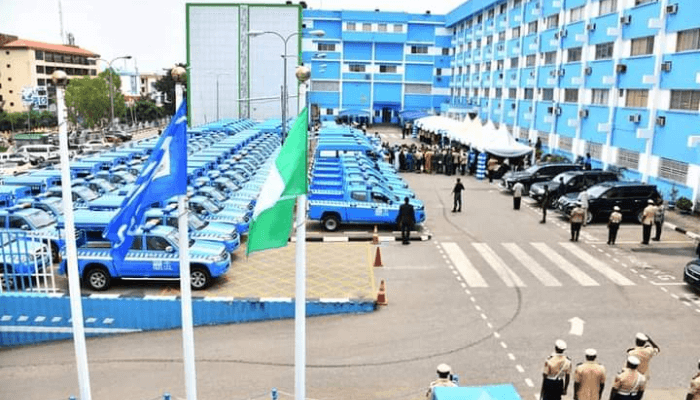Sometime in 2006, I stumbled on an alarm raised by the authorities in the United Kingdom (UK) on what they described as the disastrous figures for vulnerable road users particularly, children. Statistics, for that year, they said, showed a big increase in death among child pedestrians.
While death for child pedestrians was up by 13 percent, death for child pedal cyclists went up 55 percent. Meanwhile, they equally noted that fatalities for motorcycles popularly known as Okada in our clime jumped up to five percent.
In 2023, vulnerable road users, which include pedestrians, motorcyclists, and pedal cyclists, accounted for about half of all fatalities on the roads in Great Britain. Of these fatalities, twenty-five percent were pedestrians, nineteen percent motorcyclists and five percent pedal cyclists.
In concrete terms, 87 pedal cyclists were killed among other deaths recorded. For all vulnerable road users, nearly 100percent of them involving pedestrians occur due to collision with a car or another vehicle.
The road traffic data for our clime for pedestrians is a bit problematic. While the figure for crashes involving vehicles is not an issue, there are efforts to up the authenticity of road traffic crashes data especially those involving vulnerable road users through various platforms such as the recently launched Mobile App and the National Crash Reporting Information System (NACRIS). NACRIS is designed to promote a multi-sectoral approach to crash reporting and data storage.
For the records, motor crashes remain the leading cause of unintentional injury related deaths among children ages 14 and under. However, wearing a seat belt could prevent many of these deaths and serious injuries. Thus, over the last 30 years, it is estimated that in highly motorised countries about 310,000 fatalities and more than nine million moderate to critical injuries have been prevented through wearing seatbelts.
Even in a safety conscious country such as the United States of America (USA), it is thought that in the year 2022, 25,420 passenger-vehicle occupants were killed. This is in spite of the high seat belt usage rate in the USA. About 50 percent of those killed were not buckled. In 2003, more than 7,000 lives were lost and over 140,000 people injured unnecessarily because they failed to wear a seatbelt.
Seat belts, of course, do not prevent a crash from taking place. Other variables come to play. The list is endless as they include excessive speeding, distracted driving among others. Seatbelt, however, plays a crucial role in reducing the severity of injury to vehicle occupants involved.
Vehicle safety features are distinguished by the categories; primary and secondary safety. Primary safety features aim to prevent a road traffic crash taking place; e.g., good brakes, tyres. Secondary safety features on the other hand aim to prevent or minimize injury to a vehicle occupant once the crash has occurred.
Seatbelts are a secondary safety device with a number of objectives which includes; preventing ejection from the vehicle in an impact, reducing the risk of contact with the interior of the vehicle or reducing the speed of such impacts, thus, providing a distributed force to the wearer to give the necessary support in an accident restraining the vehicle occupant before guiding them back into their seats.
The effectiveness of the use of seatbelt is no longer in doubt as studies conducted since the 1950s have shown conclusively that seatbelt when worn and fitted correctly, saves lives. Users of seatbelts sustain approximately 35percent less major-fatal grade injuries than did non-users.
Another study by Nordisk Trafiksikker Hedsrad (1984) calculated that, “drivers and front seat passengers who do not use seatbelt suffer almost the same percentage of head injuries as non-users in rear seats’. Therefore, use of seatbelt by rear seat passengers could not reduce the likelihood and severity of injury to themselves, but also to drivers and/or front seat passengers.
I once wrote on the need to review seatbelt usage and penalties. It was titled, Time to review seatbelt usage and penalty. I was privileged to be part of the three-man team that muted the idea and kick-started the campaign to tilt driving behavior in the country. The process was fully owned by me as the spokesperson of the Federal Road Safety Corps. As the spokesperson for the corps, I was privileged to work with the former Corps Marshal Boboye Oyeyemi, as well as Kayode Olagunju who was then the Sector Commander in Lagos.
As Sector Commander, Lagos, Olagunju’s responsibilities was to coordinate my movement with Lagos and Ibadan to curry the buy-in of my media colleagues. The cost for the movement to Lagos and Ibadan, the Oyo State capital was borne by the former Corps Marshal. The novel initiative remains a key success story for the corps unlike the campaign on the compulsory use of crash helmets by motorcycle operators as well as their pillions. Before the corps is crucified, let me wear the robe of my learned colleagues and attempt to put the facts on the burner for better understanding. The seat belt and crash helmet enforcement were totally different for obvious reasons.
While the seat belt campaign for a significant number of users did not require buying or fixing anything in the vehicles. Therefore, it did not place any financial burden on either the vehicle owner or the passengers. All that the corps asked was for occupants to strap themselves while in motion as contained in the National Road Traffic Regulations. However, the crash helmet enforcement in my view did not consider varying realities that ended up as the albatross. These factors include the level of poverty, illiteracy, religious sentiments, and the cost components involving purchasing a crash helmet as well as the health scare or implications of multiple usage of a crash helmet which was drummed by most motorists.
These factors in my mind created a gap which I am glad the current campaign is addressing for better results
It is now almost 23 years since the seat belt campaign kicked off. There is no doubt that the level of compliance has been huge across the board despite certain limitations. First, is the fact that we are yet to navigate to the enforcement of the usage by front seat passengers? The preponderance of commercial vehicles numbering about 4,867,217 which mostly serves in the transportation needs in the absence of an effective intermodal system is a challenge.
I do believe that we need to step up and sustain this culture shock that has done the nation great good. It is interesting to share with you the concern in a developed clime like the United Kingdom where despite the level of success recorded and the amount invested in raising the level of awareness, the government is being urged to reinforce seat belt messages.
Interestingly, seat belt usage by seating position in the United Kingdom will marvel you. For starters, driver usage is ranked 97 percent while front seat passengers stand at 96 percent. Rear seat passenger ranking is 92 percent.
The question being asked by observers is whether the existing penalties for seat belt infraction are sufficient deterrent. This concern is borne out of the results of an observation survey, carried out in the autumn of 2021 which found out that more than five percent of drivers were not wearing seat belts in all vehicle types. The figure for front seat passengers is almost similar as it found out that non-compliance rates rose to more than eight percent among rear seat passengers.
Observers have reacted to this decline describing it as “shocking” noting that seatbelts are probably the single biggest life-saving device ever introduced into vehicles and therefore requires a reinforcement of the messages while enforcement must be stepped up. These findings, they note, raises fundamental questions which include whether the existing laws are sufficient and whether there is the need to roll out a new awareness campaign strategy. My thoughts are fully aligned with these concerns as I believe that we need to do a postmortem on seat belt usage.





